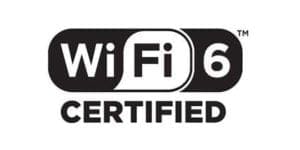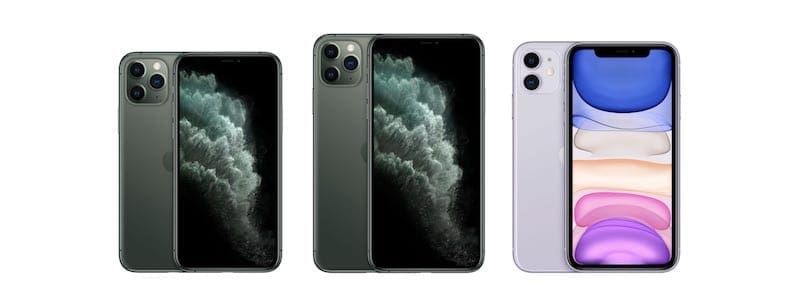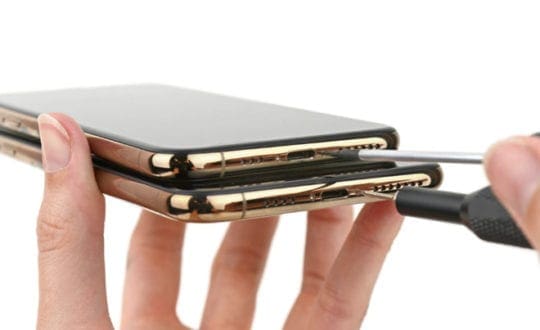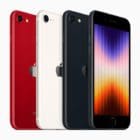Apple’s new iPhones support a significantly upgraded version of the Wi-Fi networking standard. But you’ve probably haven’t heard about it.
That’s Apple was actually fairly quiet about the upgrade. Apple actually announced it at its keynote on Sept. 10, but didn’t go into detail about what it is or its benefits. With that in mind, here’s what you need to know about Wi-Fi 6 and what it means for you.
Related:
- Here are the major new camera features on the iPhone 11 and iPhone 11 Pro
- Everything you need to know about the iPhone 11, iPhone 11 Pro, and iPhone 11 Pro Max
- Top 3 features you’ll miss if you don’t upgrade to the Apple Watch Series 5
Contents
What is Wi-Fi 6?

Wi-Fi 6 is the next generation of the Wi-Fi standard, which governs the radio technologies built into our devices. Just like 4G is an improvement over 3G, Wi-Fi 6 carries a number of benefits over its predecessor.
If you’ve never heard of Wi-Fi standards like Wi-Fi 6, that’s perfectly understandable. Wi-Fi 6 actually represents a simplified moniker change on the part of the Wi-Fi Alliance.
You see, the previous generation of the Wi-Fi standard was called “802.11ac,” which doesn’t exactly roll off the tongue. Wi-Fi 6 is actually called 802.11ax, but you can just call it Wi-Fi 6. You can also retroactively call 802.11ac “Wi-Fi 5,” and so on.
Speaking of Wi-Fi 5, the last generation of the wireless networking standard was actually released back in 2014. That means Wi-Fi 6 is actually a massive change just about five years in the making.
What Wi-Fi 6 means for you

As mentioned earlier, Wi-Fi 6 is a big improvement over the previous generation (which you’ve likely been using for years without realizing it).
Benefits of Wi-Fi 6
Unfortunately, some of the more major upgrades that Wi-Fi 6 brings are a bit complicated to understand. They include multi-user, multiple-input, multiple-output (MU-MIMO) and Orthogonal Frequency Division Multiple Access (OFDMA).
Because those terms aren’t very helpful for the average user, we’ll break down some of the possible benefits that Wi-Fi 6 brings to the iPhone.
- Wi-Fi 6 supports faster top data transfers speeds. While it obviously varies, you can expect speed improvements of about 30 to 40 percent.
- It’ll have faster and more reliable performance in crowded or densely populated environments. Think a music festival or an airport.
- Wi-Fi 6 has support for more devices on a single Wi-Fi channel, which will improve signal efficiency and latency times.
- Computational intelligence will allow Wi-Fi 6 routers to increase the signal strength of devices that are farther away. In other words, your range will increase without detrimental effects on your connection.
- A “scheduling” mechanism that will ensure all devices on a network will maintain a strong Wi-Fi signal, even if there are multiple devices on the network.
- Wi-Fi 6 supports WPA3, a new security standard that offers tangible data encryption benefits and additional options to users.
Which new iPhones have Wi-Fi 6?

While Apple didn’t spend much time on it, the company did announce that all three of this year’s iPhones will support Wi-Fi 6.
That’s actually fairly significant because Wi-Fi 6, as a standard, is relatively new. According to Wi-Fi Now, there have only been about 11 smartphone models that support the new radio standard.
If you’d like a bit of supply chain trivia, the publication also notes that Broadcom manufactured the Wi-Fi 6 chipset in the iPhone 11 and iPhone 11 Pro. It also made the chipset in the Samsung Galaxy S10 and the Samsung Galaxy Note 10 models.
A caveat
Even though Wi-Fi 6 carries a number of exciting and tangible benefits over the previous generation, it won’t mean that your internet will be magically faster.
First off, you’ll actually need a Wi-Fi 6 router or access point to take advantage of the improvements. Wi-Fi 6 devices are backwards compatible with Wi-Fi 6 routers, but you won’t get any benefits.
Similarly, the internet speed at your home is dependent on the service you buy from your internet service provider (ISP). If your speed cap is, say, 100 Mbps, Wi-Fi 6 won’t allow you to go over that threshold.
iPhone connectivity

While Wi-Fi 6 certainly hasn’t had the recognition or fanfare that 5G has, it still represents a major leap forward in terms of wireless connectivity.
And it’s actually somewhat surprising that Apple has adopted Wi-Fi 6 already. The company is fairly slow in introducing new wireless technologies.
For example, Apple is introducing a 5G iPhone next year — at least a year later than some of its Android competitors. It also rolled out 4×4 MIMO technology well after quite a few of its rivals.
Still, Wi-Fi 6 bodes well for Apple and its customers. And it’s not even the only wireless tech upgrade in the new iPhones. In addition to Wi-Fi, the iPhone 11 lineup will support incrementally faster 4G LTE data speeds. According to one test firm, speeds will be about 13 percent better.
Have you pre-ordered or your iPhone 11? Or are you going to wait out this upgrade cycle? We would love to hear from you.

Mike is a freelance journalist from San Diego, California.
While he primarily covers Apple and consumer technology, he has past experience writing about public safety, local government, and education for a variety of publications.
He’s worn quite a few hats in the journalism field, including writer, editor, and news designer.










Write a Comment